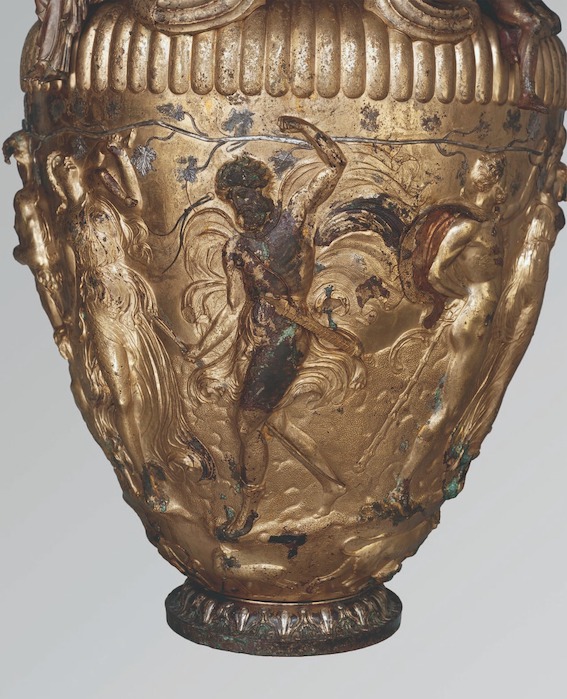Licurgo l'assassino, la bipenne e la spada
DOI:
https://doi.org/10.47661/afcl.v13i26.34213Keywords:
Licurgo, Dioniso, Mito, HomeroAbstract
Il contributo, anche reagendo ad uno spunto di J. Bollack e ad uno scritto di E. Magnelli, commenta Iliad. 6.130-140, sotto il profilo filologico, con l'interpretazione del discusso vocabolo βουπλήξ e l'esame di molte altre fonti, classiche e tarde; e, sotto il profilo storico-religioso, attraverso l'analisi di Plut., Quaest. Graec. 299F, 38: il confronto con quest'ultimo luogo, illustrando il ruolo di amici e nemici di Dioniso, permette anche il chiarimento di un dettaglio iconografico finora inspiegato nel cratere di Derveni, saldando insieme fonti letterarie e testimonianze artistiche.Downloads
References
Bernabè, A. Poetarum Epicorum Graecorum Testimonia et Fragmenta, Leipzig, 1988.
Barr-Sharrar, B. The Derveni Krater: Masterpiece of Classical Greek Metalwork, Athens, 2008.
_____.The Eschatological Iconography of the Derveni Krater, in Denovelle, M., Descamps- Lequime, S., Mille, B. et Verger, S. (dir.), Bronzes grecs et romains, recherches récentes. Hommage à Claude Rolley, INHA (Actes de Colloques), 2012, pp. 1-18 (http://inha.revues.org/3976).
Blumenthal, A. “Beobachtungen zu griechischen Texten IV”, Hermes 77, 1942, pp. 103-111.
Bollack, J. La Grecia di nessuno, a c. di R. Saetta-Cottone, tr. it., Palermo, 2007.
Burkert, W. Homo Necans. The Anthropology of the Ancient Greek Sacrificial Ritual and Myth, Engl. transl., Berkeley - Los Angeles - London, 1983.
Curtius, L. Pentheus, Berlin und Leipzig, 1929.
Di Marco, M., a c. di, Timone di Fliunte. Silli, Roma, 1989.
Dodds, E. R. Euripides. Bacchae, Oxford, 198810.
Dowden, K. Death and the Maiden. Girls’ Initiation Rites in Greek Mythology, London and New York, 1989.
Furley, W. D. “A Lesson To All: Lykurgos’ Fate in the Tbilisi Hymn (P.RossGeorg. I.11)”, Zeitschrift für Papyrologie und Epigraphik 162, 2007, pp. 63-84.
Grassigli, G. L. “La fede di Astion. Per un’interpretazione del cratere di Derveni”, Ostraka 8, 1999, pp. 99-143.
Henrichs, A. “Der rasende Gott: zur Psychologie des Dionysos und des Dionysischen in Mythos und Literatur”, Antike und Abendland 40, 1994, pp. 31-58.
Kerényi, K. Dioniso, tr. it., Milano, 20102.
Kirk, G. S. The Iliad: A Commentary. Volume II: Books 5-8, Cambridge, 1990.
Latacz, J. s. v. “Eumelos” [5], in Cancik, H. - Schneider, H. (hrsg. v.), Der Neue Pauly, 4, Stuttgart-Weimar, 1998, coll. 249-250.
Magnelli, E. “Il cratere di Derveni, Nonno e il bouplex di Licurgo”, Prometheus 35, 2009, pp. 125- 138.
Marbach, E. s. v. “Lykurgos” [1], RE 13.2, 1927, coll. 2433-2440.
Mihailov, G. “Observations sur le cratère de Derveni”, Revue des Études Anciennes 93, 1991, pp. 39- 54.
Nilsson, M. P. Geschichte der griechische Religion, München, 19673.
Nonno di Panopoli Le Dionisiache (Canti XIII-XXIV), a c. di F. Gonnelli, Milano, 2003.
Otto, W. F. Dioniso. Mito e culto, trad. it., Genova, 1997.
Picard, Ch. “Lycurgue l’Edone menaçant une ‘nourrice’ de Dionysos”, Monuments et mémoires de la Fondation Eugène Piot 45, 1951.
Robertson, M. “Monocrepis”, Greek, Roman & Byzantine Studies 13, 1972, pp. 39-48.
Rondot, V. “Le dieu à la bipenne, c'est Lycurgue”, Revue d’égyptologie 52, 2001, pp. 219-249.
Shapiro, H. A. Myth into Art. Poet and Painter in Classical Greece, London and New York, 1994.
Simon, E. “Die Lykurgie des Aischylos und der Krater von Derveni”, Egnatia 11, 2007, pp. 199-212.
_____. “Lykurgos. Frevler, Tor, Bekehrter”, in Religion, Lehre und Praxis, Akten des Kolloquiums Basel, 22. Oktober 2004, Athen, 2009, pp. 111-124.
West, M. L. (ed.), Homeri Ilias, I-II, Stuttgardiae, Monachi et Lipsiae, 1998-2000.
_____. Studies in Aeschylus, Stuttgart, 1990.


